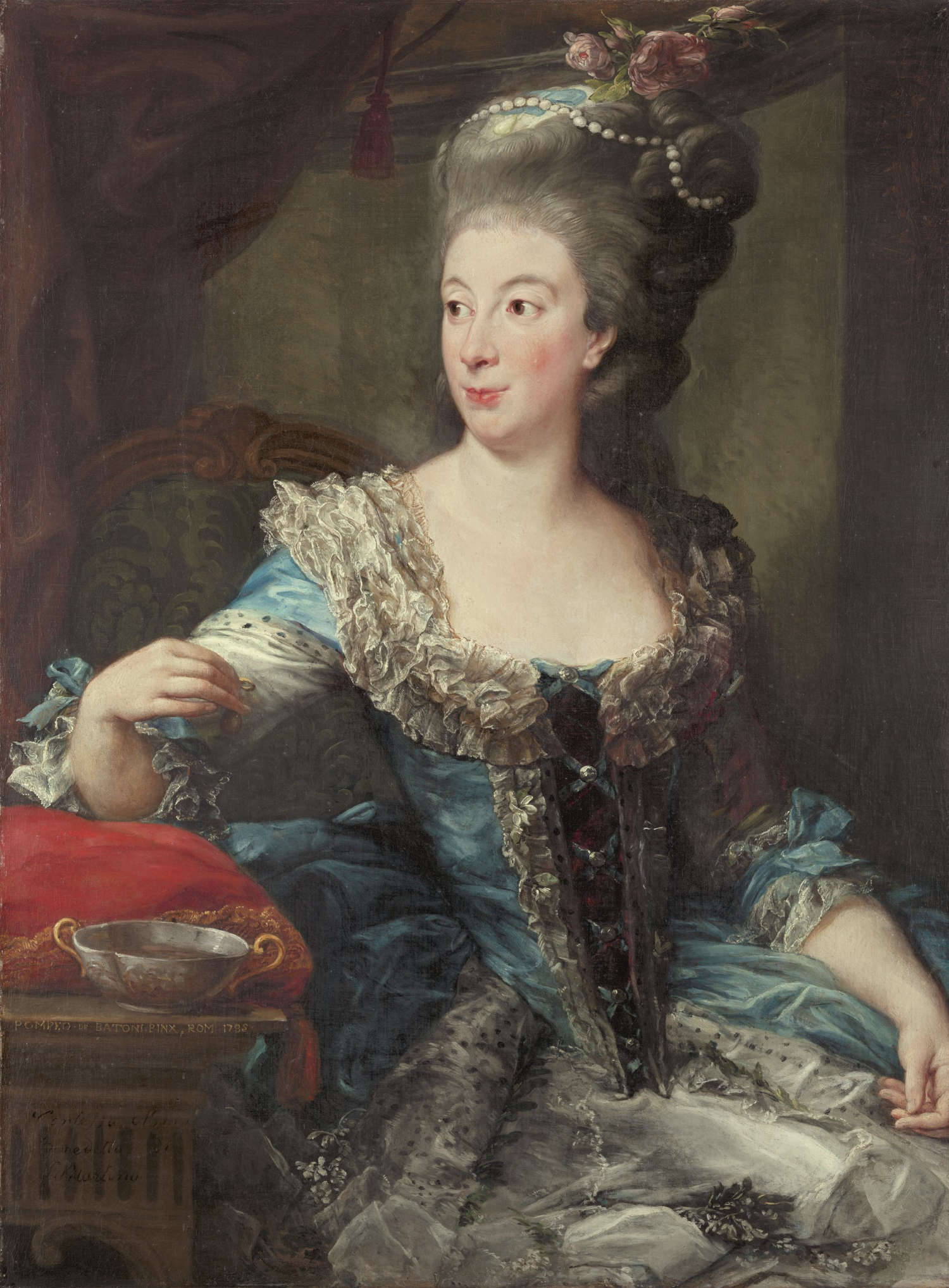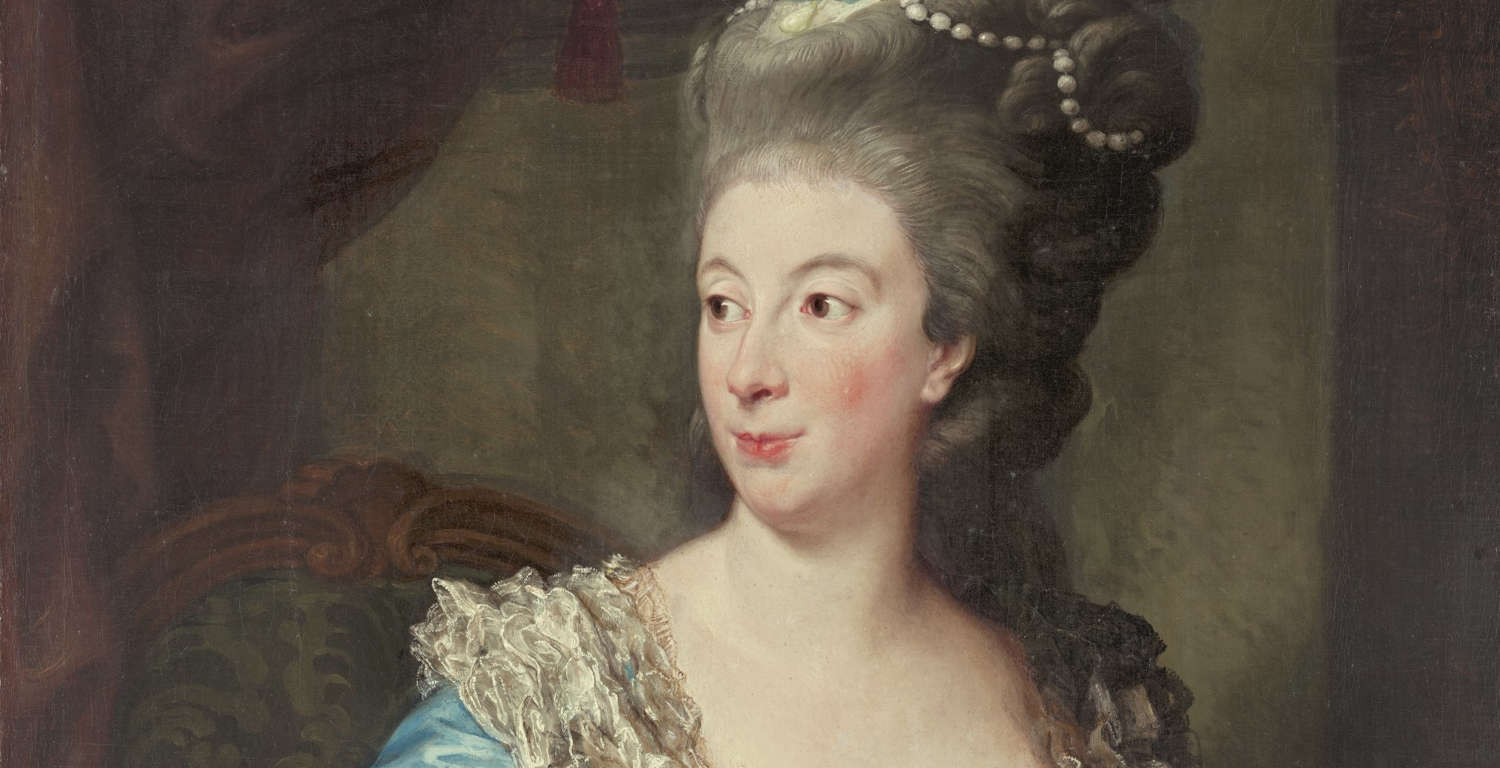A celebrated protagonist of 18th-century European painting arrives in Bologna from Feb. 16 to April 7, 2024: he is Pompeo Girolamo Batoni (Lucca, 1708 - Rome, 1787), whose Portrait of Countess Maria Benedetta di San Martino from the Museo Nacional Thyssen-Bornemisza in Madrid is being exhibited by the Museo Civico d’Arte Industriale e Galleria Davia Bargellini of the Bologna Civic Museums Sector. The exhibition opportunity, curated by Mark Gregory D’Apuzzo and Ilaria Negretti, is part of the Ospiti event promoted since 1996 by the Bologna Civic Museums of Ancient Art as an activity to enhance the heritage and develop scientific relations with Italian and international museum institutions through the exchange of works activated on the occasion of loans for temporary exhibitions.
The painting by Pompeo Batoni, a celebrated 18th-century portrait painter, came to Bologna in response to the exhibition Maestras organized by the Museo Nacional Thyssen-Bornemisza and curated by Rocío de la Villa, which explores women’s artistic production from the late 16th century to the early decades of the 20th century, analyzing eight crucial contexts in women’s path to emancipation. Batoni’s work is a sign of mutual collaboration, as it responds to the loan of Lavinia Fontana’s work, Judith with the Head of Holofernes, by the Musei Civici d’Arte Antica of Bologna. Lavinia Fontana, along with Fede Galizia, Artemisia Gentileschi and Elisabetta Sirani, was part of three generations of artists who achieved success with chastened depictions of mythological characters, biblical heroines and historical figures. Thanks to his skill in drawing and composition, Pompeo Batoni achieved success by becoming known for his ability to portray natural beauty with a spontaneous and harmonious touch that was appreciated by the patrons of the time.

His perfect and spontaneous simplicity has been praised as a natural gift, in contrast to the more theoretical approach of other contemporary artists such as Anton Raphael Mengs. Batoni is best known for painting historical, mythological and sacred subjects, known for works such as the 1765 icon of the Sacred Heart of Jesus. He completed major commissions such as an altarpiece for the church of San Gregorio al Celio in Rome and explored portraiture, creating a new portrait typology that integrated elegant poses with ancient monuments, meeting the needs of international aristocratic clientele. Even in conventional portraits, Batoni demonstrated extraordinary skill in execution and color choice. One example is the portrait of Countess Maria Benedetta di San Martino, characterized by grace and elegance. This painting passed through several collections before being exhibited in the Thyssen-Bornemisza collection. The depiction of the countess, with a pearl above a cup, evokes the episode of Cleopatra narrated by Pliny the Elder, showing aristocratic elegance.
During the period of the work’s exhibition, the Museo Civico d’Arte Industriale e Galleria Davia Bargellini is offering a series of free guided tours by RTI Senza Titolo S.r.l., ASTER S.r.l. and Tecnoscienza: Saturday, Feb. 17, 4:30 p.m.; Sunday, Feb. 25, 4:30 p.m.; Sunday, March 3, 4:30 p.m.; Saturday, March 16, 4:30 p.m.; Saturday, March 30, 4:30 p.m.; Sunday, April 7, 4:30 p.m.
“Batoni depicts the Countess sitting in a dark interior. The only classical references are the objects, such as the table with a red cushion on it and the cup balanced on the near edge. The image is very appealing because of the contrasting color scheme used for the countess’s dress, painted in a vibrant blue with a delicate range of silver tones. The countess is depicted with bright, lively eyes, a low-cut gown, and an elaborate, sophisticated hairstyle. The tall, abundant hair is decorated with pearls, a blue ornament to match the dress, and a small bouquet of roses. The pose, setting, and hairstyle have been compared to those of another late Batoni portrait of the Marquise Barbara Durazzo Brignole from 1786,” is how Mar Borobia, head of the Department of Old Master Painting for the Madrid museum, presented the work within the card compiled for the general catalog of paintings at the Museo Nacional Thyssen- Bornemisza.
Regular hours: Tuesday, Wednesday, Thursday 10 a.m. - 3 p.m.; Friday 2 p.m. - 6 p.m.; Saturday, Sunday, holidays 10 a.m. - 6:30 p.m.; Closed non-holiday Mondays. Free admission
 |
| From Madrid to Bologna, important portrait by Pompeo Batoni arrives at Davia Bargellini Museum on loan |
Warning: the translation into English of the original Italian article was created using automatic tools. We undertake to review all articles, but we do not guarantee the total absence of inaccuracies in the translation due to the program. You can find the original by clicking on the ITA button. If you find any mistake,please contact us.